In this paper, the DSl8820 temperature and humidity sensor is relatively simple to use and has high measurement accuracy. At the same time, combined with the powerful functions of MSP430F2013 and the characteristics of low power consumption, a node based on the temperature wireless sensor network monitoring system is designed to measure the temperature of the environment. monitor. Because of its huge scientific significance and use value, wireless sensor networks have been favored by more and more academic departments, military departments and industrial departments. With the development of society and economy, it is necessary to detect and control the temperature and humidity of the environment in many cases, especially in places with serious pollution, harsh natural conditions and difficult to reach by people.
1 Wireless sensor network structure
The wireless sensor network is composed of a large number of inexpensive small or micro wireless sensor network nodes deployed in the monitoring area, and forms a multi-hop self-organizing intelligent network system through wireless communication. Its application prospects are very broad, and it is gradually deepening into various fields of human life, such as medical care, building structure, health monitoring and so on. Environmental detection is also a typical wireless sensor network application. Its structure is shown in Figure 1.
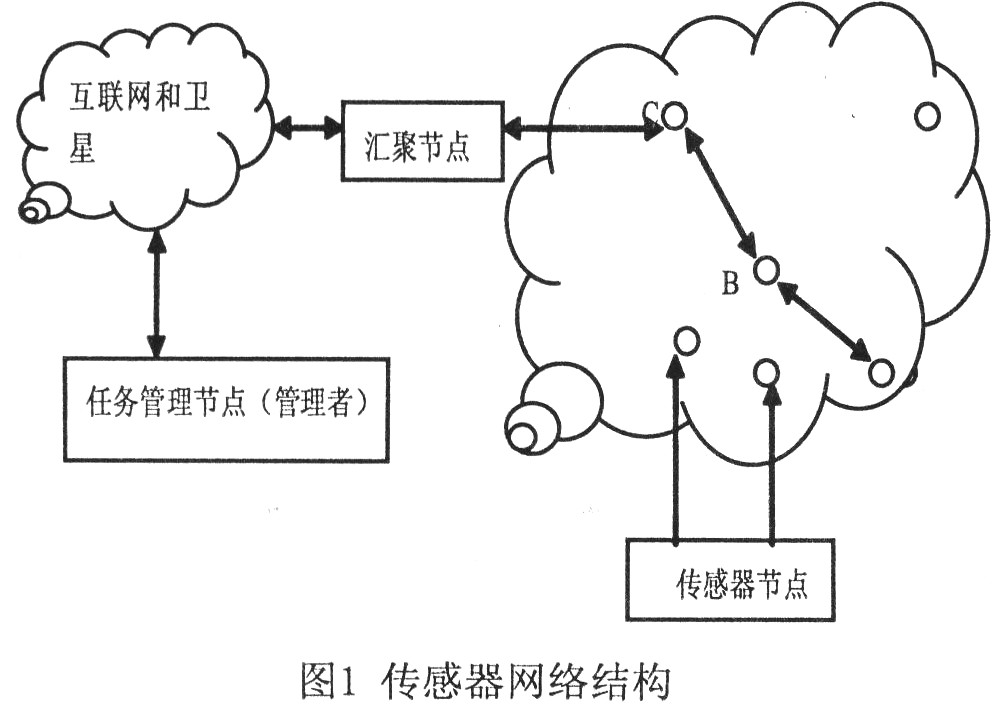
2 Design structure of temperature sensor node
The core of the wireless sensor network system is the sensor node, and the design needs to meet the following main conditions: network, miniaturization, low power consumption, and stability.
According to the above requirements, the sensor node design generally includes four parts: processor module, wireless transmission module, sensor module and power supply module. As shown in the structure diagram 2:
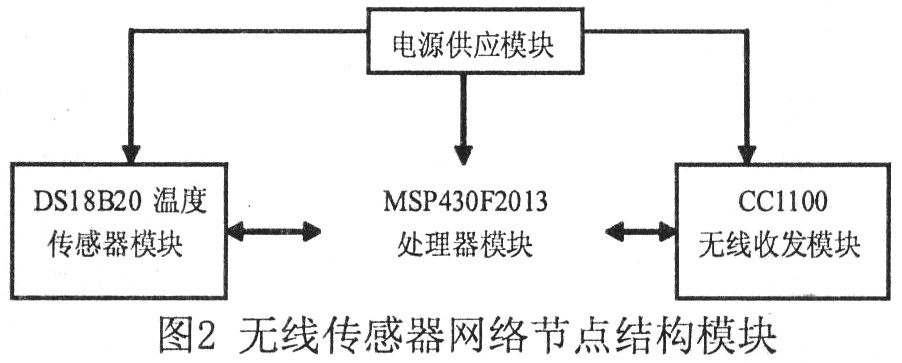
The hardware circuit design of this paper uses TI's 16-bit low-power single-chip MSP430F2013 as the processing module, the sensor module uses DS18820, the wireless transmission module uses low-power wireless transceiver module CCll00, and the power supply uses battery or regulated power supply. The sensor module is responsible for the collection and data conversion of information in the monitoring area; the processor module is responsible for controlling the operation of the entire sensor node, the data stored and collected and the data sent by other nodes; the wireless communication module is responsible for wireless communication and exchange with other sensor nodes Control messages and send and receive data; the power supply module provides the sensor nodes with the energy required for operation, usually using micro batteries.
2.1 DSl8820
The temperature sensor adopts DSl8820, it is relatively simple to use, and its main features are as follows
(1) Unique single-wire interface mode: when the DSl8820 is connected to the microprocessor, only one port line is needed to achieve bidirectional communication between the microprocessor and the DSl8820. No peripheral components are required in use.
(2) It can be powered by the data line, voltage range: + 3.0 ~ + 5.5V.
(3) Temperature measurement range: -55 + 125 ℃. The inherent temperature measurement resolution is O. 5 ℃.
(4) 9 to 12 digits digital reading can be realized through programming.
(5) The user can set the upper and lower limits of the non-volatile alarm.
(6) Support multi-point networking function, multiple DSl8820 can be connected in parallel on the only three lines to achieve multi-point temperature measurement.
(7) Negative pressure characteristics. When the polarity of the power supply is reversed, the thermometer will not be burned due to heat, but it will not work properly.
Because the DSl8820 single-line communication function is completed in time-sharing, he has a strict concept of time slots, so read and write timing is very important. The system's various operations on the DSl8820 must be carried out in accordance with the agreement. The operation protocol is: initialize DS18820 (send reset pulse) → send ROM function command → send memory operation command → process data.
2. 2 MSP430F2013
The processor module is the computing core of the wireless sensor network node. All device control, task scheduling, energy calculation and function coordination, communication protocols, data integration and data dump procedures will be completed with the support of this module. Selection is crucial in node design.
msp430f2013 is a microcontroller of TI's msp430 series. It has the following structural features: 16-bit risc cpu, 16-bit register and constant generator, which can obtain high code efficiency; five low-power modes, in Portable measurement applications can extend battery life: digitally controlled oscillator (dco) makes switching from low-power mode to normal mode less than μs; a 16-bit timer; 10 i / o ports: with synchronous communication Protocol (spi or i2c); a 16-bit sigma-delta ADC. The structure of the sensor and processor is shown in Figure 3.
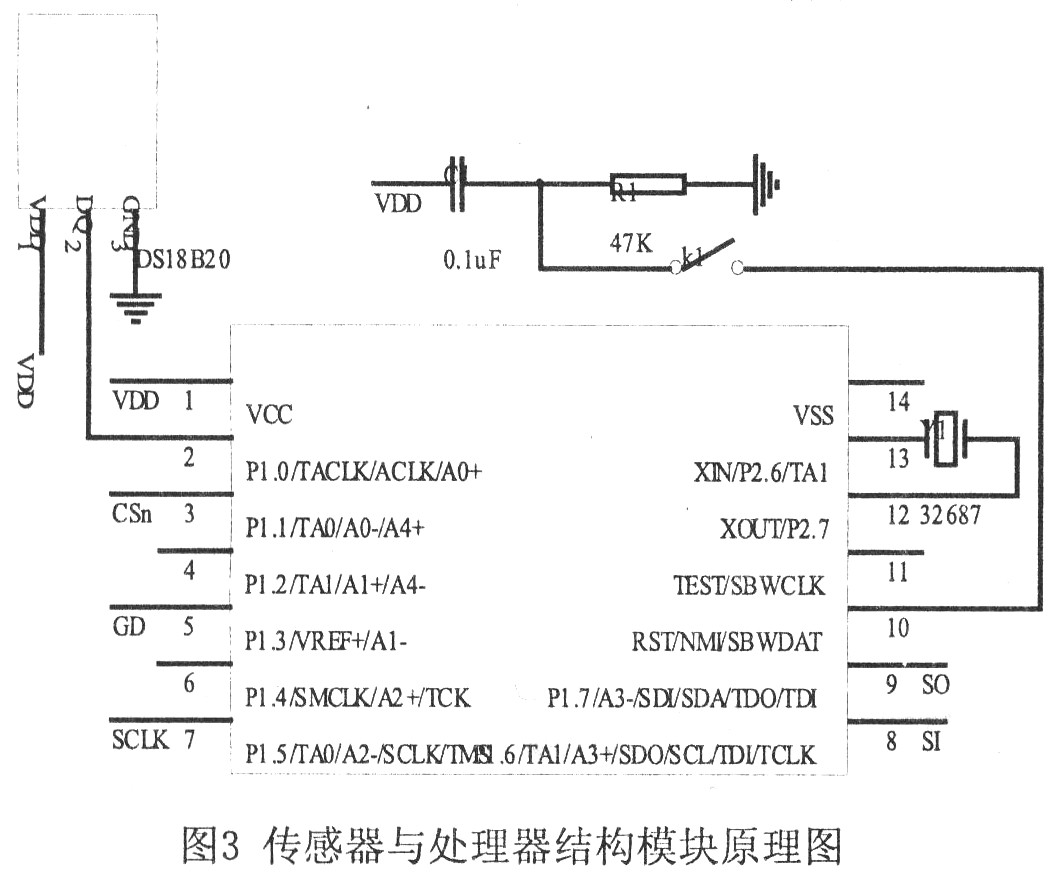
2. 3 wireless transceiver module CCl100
The wireless communication module is the main energy-consuming module, so choose carefully. Considering that the communication module of the wireless sensor network node must be energy controllable, and the power consumption of sending and receiving data should be very low, Chipcon's CCll00 is selected as the wireless transceiver module. The chip is small in size, low in power consumption, and the data rate supports programmable control from 1.2 to 500Kbps. In this paper, CCll00 works at a frequency of 315MHZ, adopts FSK modulation, the data rate is 100kbps, and the channel interval is 100kHZ. The CCll00 programming line and data line are connected to the processor chip separately, so that you can easily read the status of the CCll00 internal register while sending and receiving data, so that you can effectively control the communication process. The schematic diagram of the wireless transceiver module is as follows:
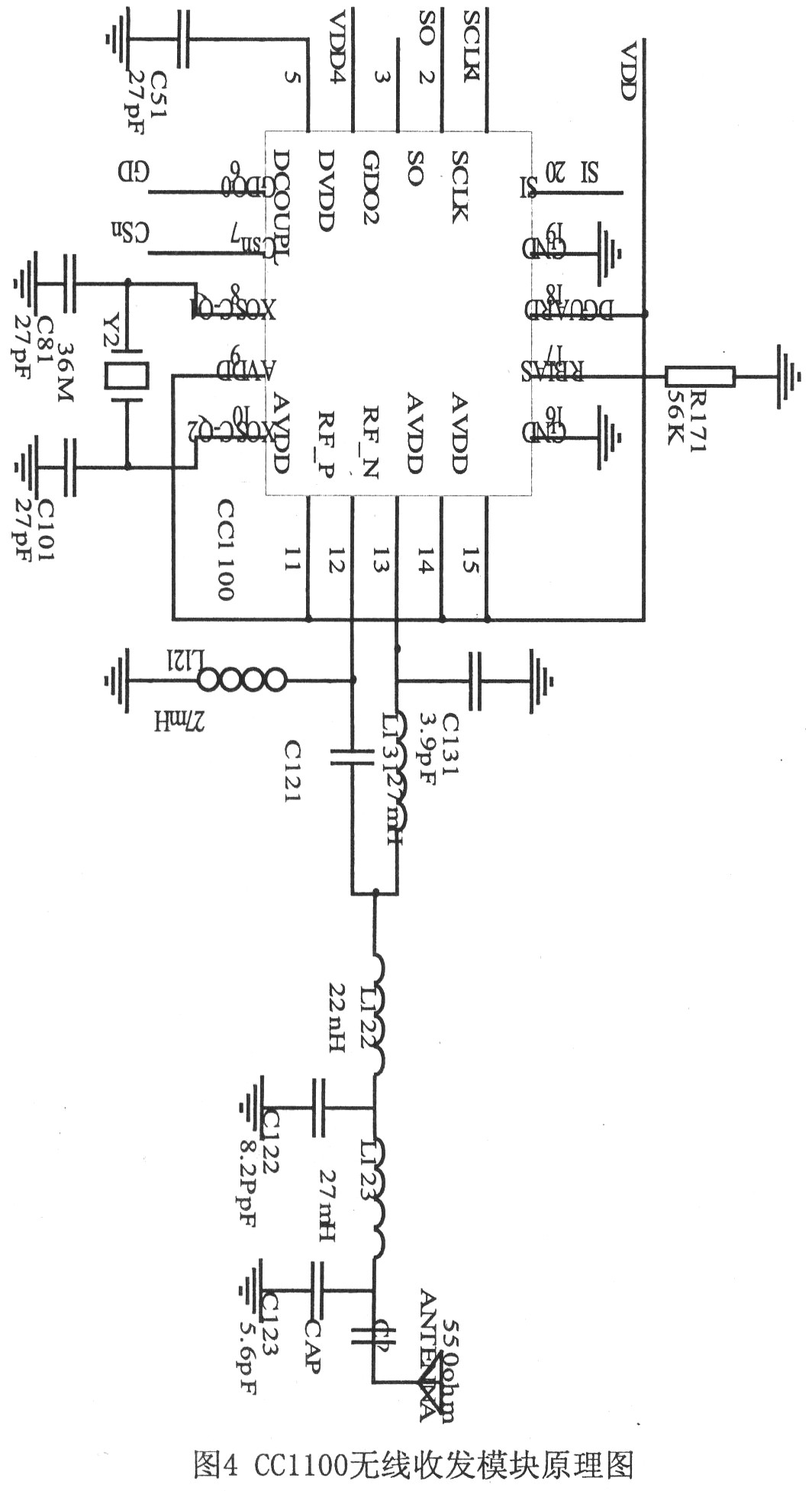
3 Node software design
System software design mainly includes node sending program and parameter adjustment program, SINK node receiving program and upper PC program. The node sending program mainly completes the data collection and data sending of the field sensor chip. The node sending program flow is shown in Figure 4. After power-on, the node wireless module is in the receiving state, detects the command sent by the SINK node, and starts collecting the field data after receiving the correct command. When the node receives the data, it will regard the data after the prefix as valid data. The single-chip microcomputer first checks the ID number of the substation. If the ID number is not the local one, it discards all data and enters the receiving state again, which can prevent erroneous actions and maliciousness. Of destruction. Otherwise, continue to judge the command number to determine the action of the node. If the SINK node needs data, it judges the sensor number to confirm which sensor data of the node is required. After analyzing the data, the node collects and packages the on-site data and sends it to the SINK node, or starts the parameter adjustment system to adjust the parameters, and then enters the receiving state again.
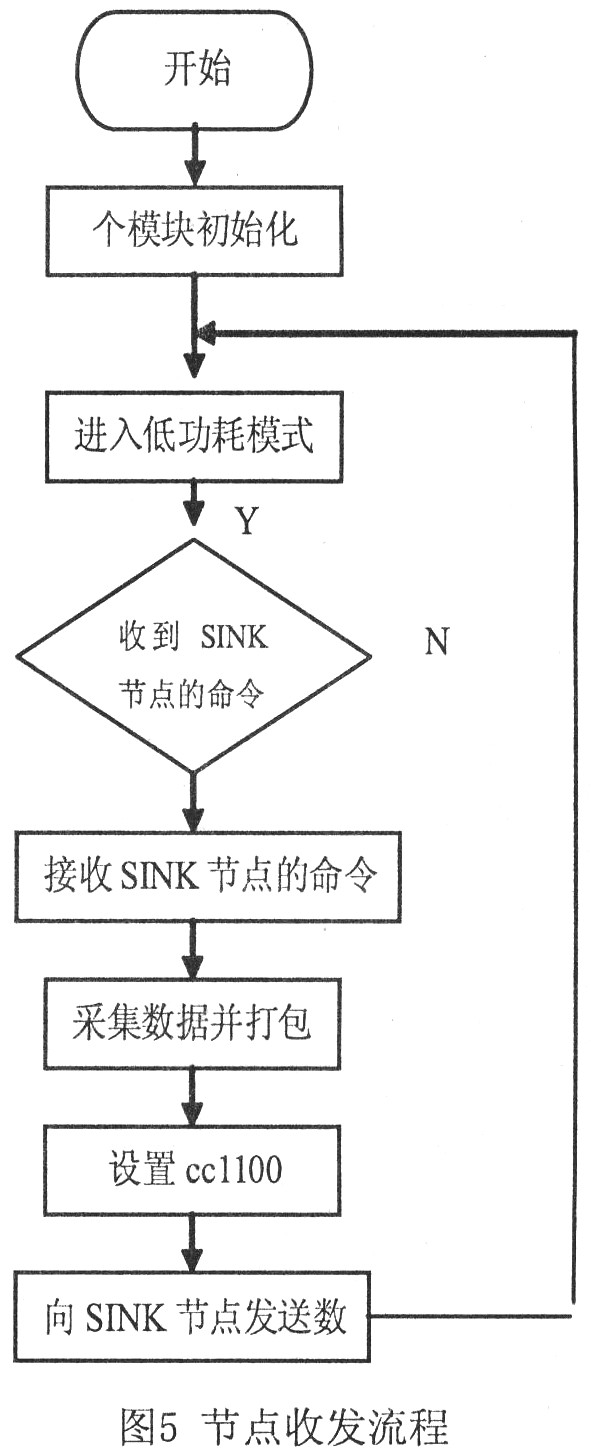
4 Conclusion
Based on the summary of the original theoretical research results, this paper proposes a low-cost, low-power temperature wireless sensor network node based on the single-chip MSP430 and CCllOO transceiver chip. In the experiment, 5 nodes and 1 SINK node can be used to form A small wireless sensor network. The successful design of the wireless sensor network node has laid a good foundation for the networking of wireless sensor networks to the final practical application.
Optical Filter,Long Wave Pass Filter,Optical Pass Band Filter,Bandpass Filter
Danyang Horse Optical Co., Ltd , https://www.dyhorseoptical.com